When it comes to sewing a garment, buttons and button holes are usually some of the last things people think about. However, choosing the right ones can have a big outcome on how your finished project turns out.
First, let’s talk about buttons. It’s always a good idea to pick your buttons before you start adding button holes to your project. This way you will know what size and shape to make your button hole.
Buttons can be found in many different shapes and sizes, and while you may be tempted to use a button simply because of its look or color, you still want to make sure it fits with your fabric and project.
Types of Buttons
One type of button is a flat button. This type of button can be found with either two or four holes.
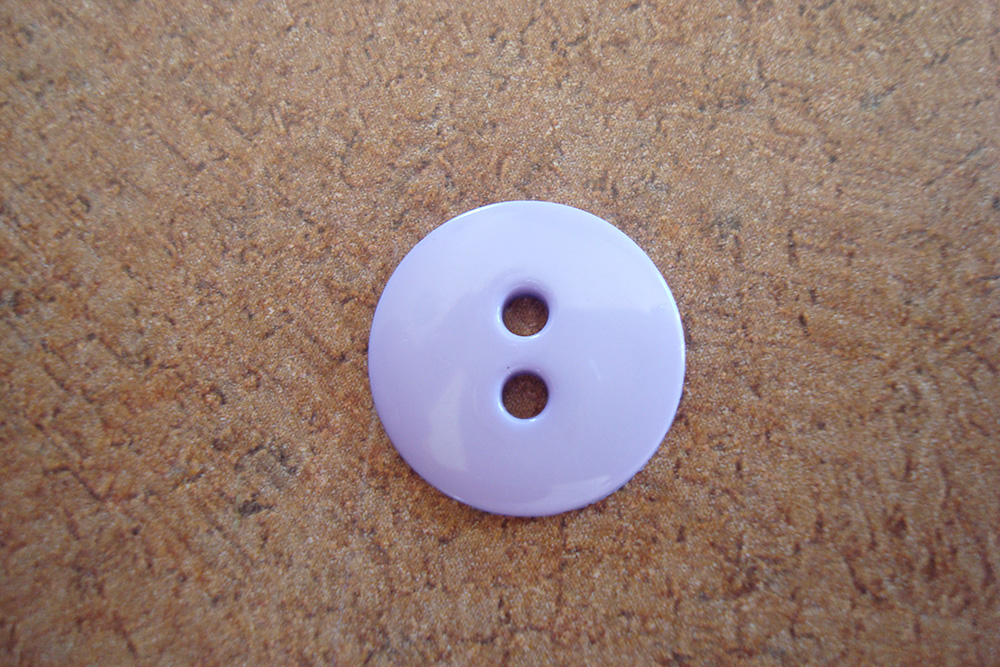 Two-hole flat buttons are great for light- or medium-weight fabrics and are usually attached with the holes lined up parallel to the fabric edge.
Two-hole flat buttons are great for light- or medium-weight fabrics and are usually attached with the holes lined up parallel to the fabric edge.
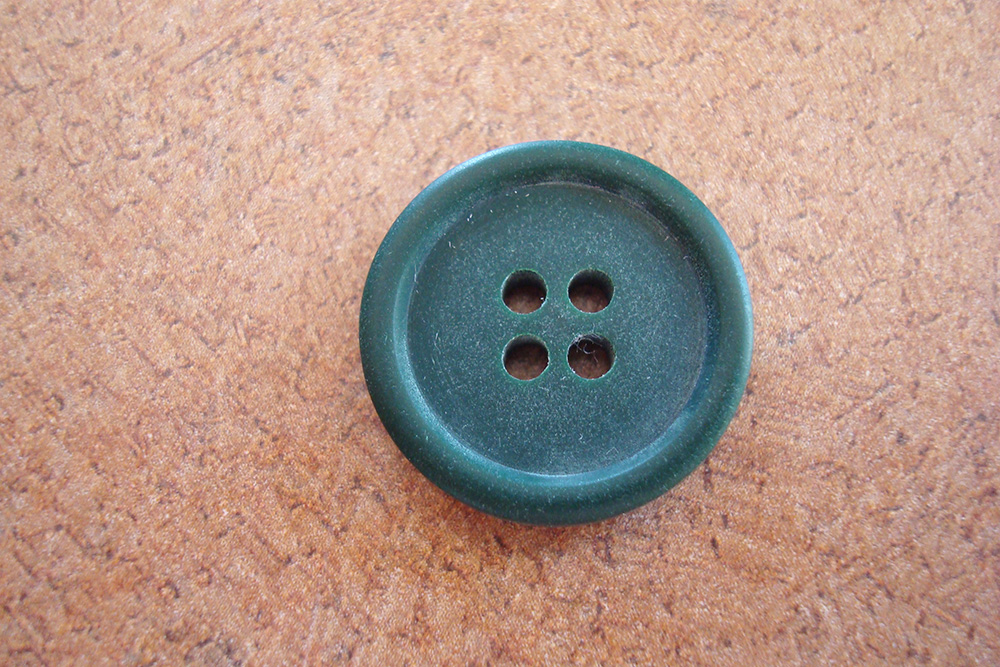 Four-hole flat buttons are better for heavy-weight fabrics, as the extra holes make for a stronger attachment.
Four-hole flat buttons are better for heavy-weight fabrics, as the extra holes make for a stronger attachment.
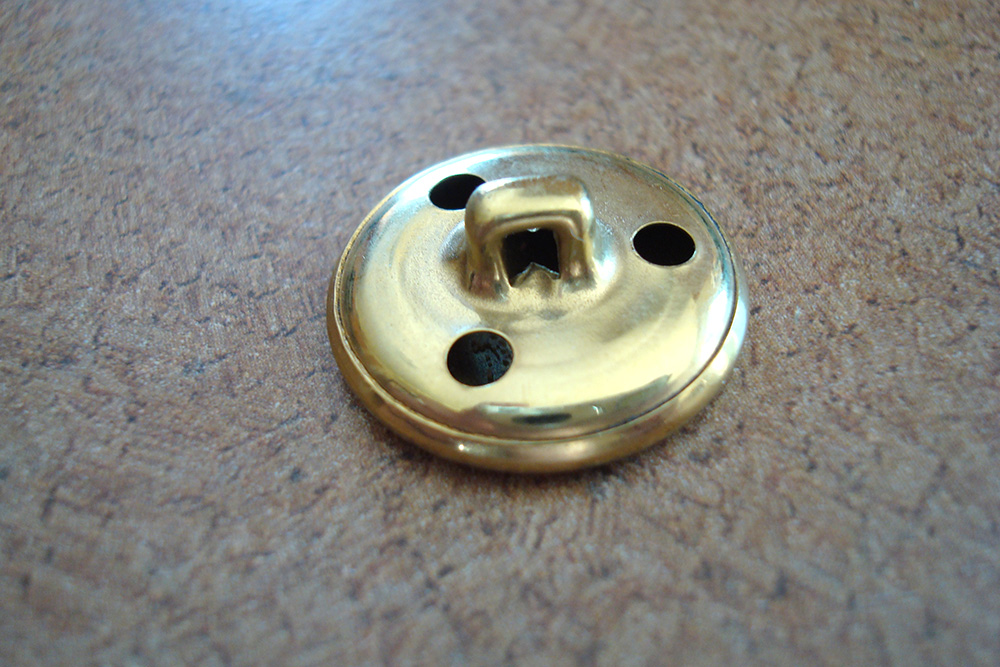 Shank buttons have a hole or loop at the back that is used to attach it to the fabric. A larger loop helps provide extra space between the button and the garment, making it a good choice for heavy-weight fabrics and projects like winter jackets. Shank buttons can also help a garment hang or drape better because of the smaller attachment area.
Shank buttons have a hole or loop at the back that is used to attach it to the fabric. A larger loop helps provide extra space between the button and the garment, making it a good choice for heavy-weight fabrics and projects like winter jackets. Shank buttons can also help a garment hang or drape better because of the smaller attachment area.
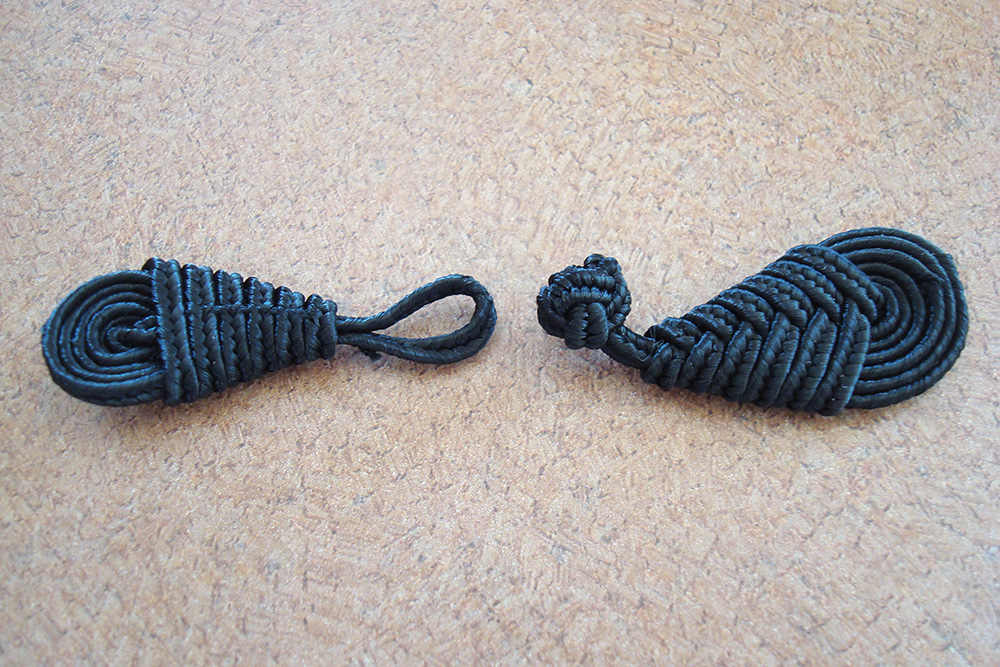 Frogs, also known as Mandarin buttons, are made of string, plastic, or metal and have a loop on one side and some kind of knot on the other. These buttons are perfect if you don’t want to stitch a button hole because they don’t require one!
Frogs, also known as Mandarin buttons, are made of string, plastic, or metal and have a loop on one side and some kind of knot on the other. These buttons are perfect if you don’t want to stitch a button hole because they don’t require one!
Types of Button Holes
Now let’s talk about button holes. Most machines these days have many different button hole settings to choose from that originate from basic shapes.
 The first is the basic straight, square button hole. It is one of the more commonly used button holes, especially for beginners. It is a good button hole for medium- to heavy-weight fabrics and also areas of a garment that may be subject to strain.
The first is the basic straight, square button hole. It is one of the more commonly used button holes, especially for beginners. It is a good button hole for medium- to heavy-weight fabrics and also areas of a garment that may be subject to strain.
Many machines have a sensor setting, an auto setting, or both that can create this button hole. The sensor setting uses a special foot that holds the button being used and stitches the correct size button hole for that button. The auto setting will stitch this button hole to whatever size you tell it.
Your machine may also have a setting that looks like the basic straight button hole but with zig-zag lines spaced further apart. This is the setting you would want to use if stitching this button hole onto a stretch or knit fabric.
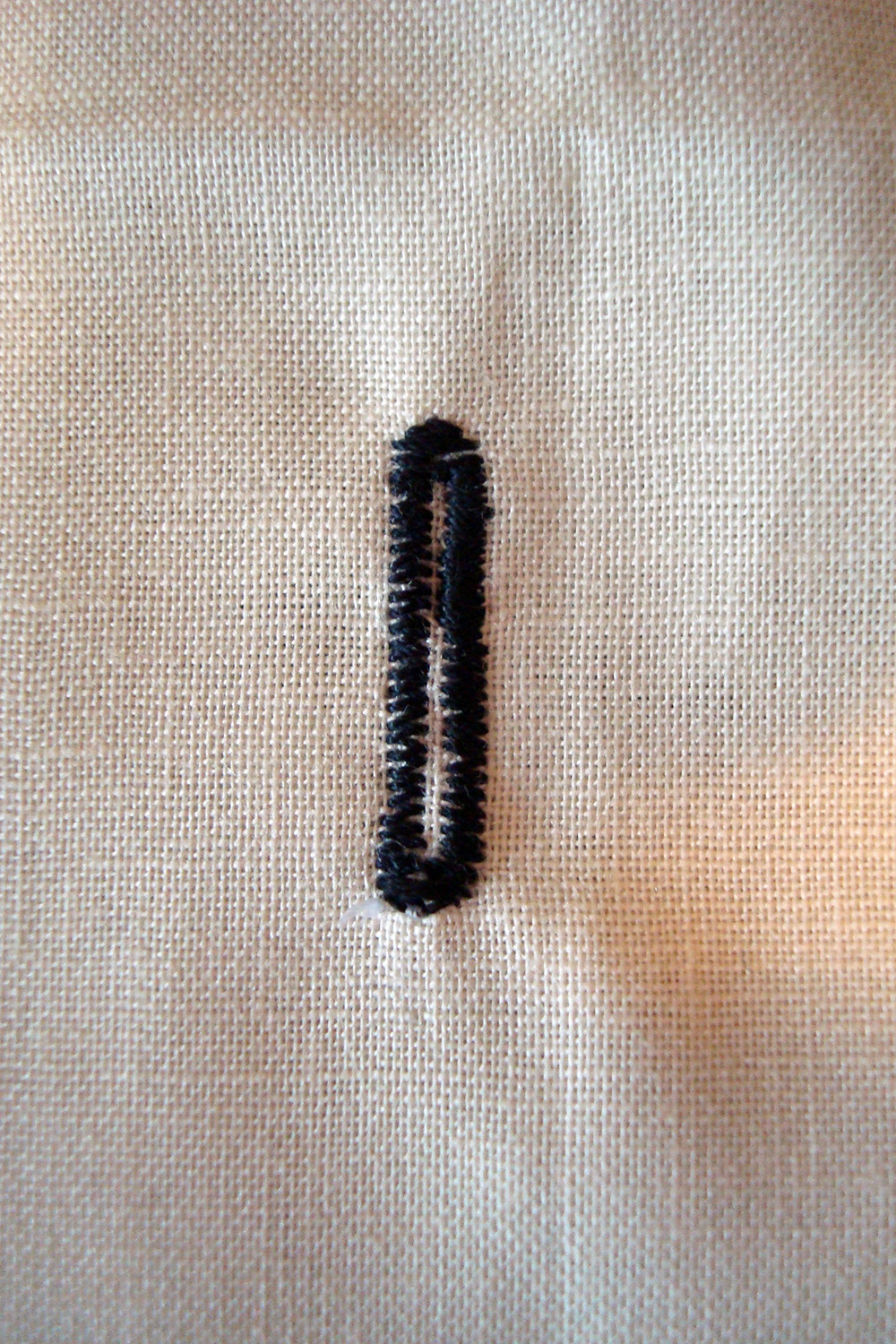 The next button hole is similar to the first, but has either one or both rounded ends. This is a good button hole for light-weight fabrics and can have a more delicate look than the square button hole, making it a good choice for something like a blouse.
The next button hole is similar to the first, but has either one or both rounded ends. This is a good button hole for light-weight fabrics and can have a more delicate look than the square button hole, making it a good choice for something like a blouse.
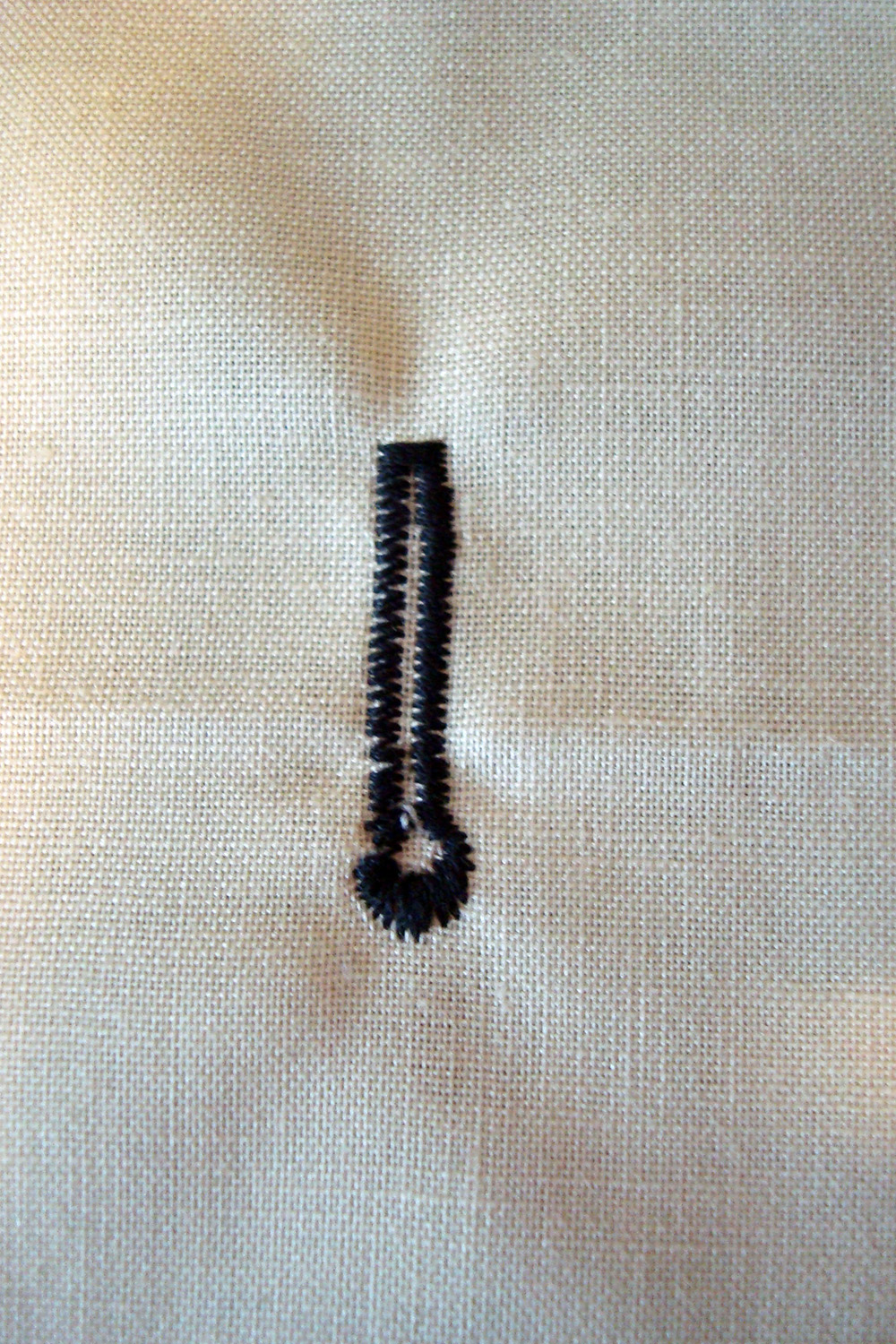 A keyhole is another type of button hole. This button hole has one slightly larger rounded end to accommodate larger buttons and buttons with shanks. This button hole is perfect for heavy-weight fabrics and would be a good choice for a jacket.
A keyhole is another type of button hole. This button hole has one slightly larger rounded end to accommodate larger buttons and buttons with shanks. This button hole is perfect for heavy-weight fabrics and would be a good choice for a jacket.

A final type of button hole is a bound button hole. Bound button holes can add a beautiful, professional touch to your project, but they are a little more work than a machine stitched button hole.
Happy sewing!
Related Videos:
Get in touch! Leave a comment or email editor@nationalsewingcircle.com.


</strong>Thank you for this information. I've nearly finished knitting myself a cardigan, for which I need buttons. However, my pattern being a vintage 1930's pattern, there is no indication of what size of button to use. Is there a general proportion recommended between the size of the button and that of the buttonhole? Thank you.
How does one determine where the button hole will begin? I have a button hole foot but can never determine where the hole will begin .... please advise.
The bound buttonhole you show is NOT a bound button. The bound buttonhole is done with matching fabric and mostly done by hand. Please put up a picture of a real bound buttonhole used in beautifully made clothes.
I found this explanation very helpful. i wondered why my idea of a four hole button did not quite suit this very light weight fabric button down skirt I am sewing. I saw that the two hole will match the delicate look. Thank you! Wendy
very good instructions.
Good ... very helpfull
Thank you for offering these tutorials. I would like to suggest that when you make the first three, all machine sewn buttonholes, you will usually get a cleaner, more finished look if you sew around twice. Also, you might have shown a machine stitched bound buttonhole, without the hand sewn stitches showing.